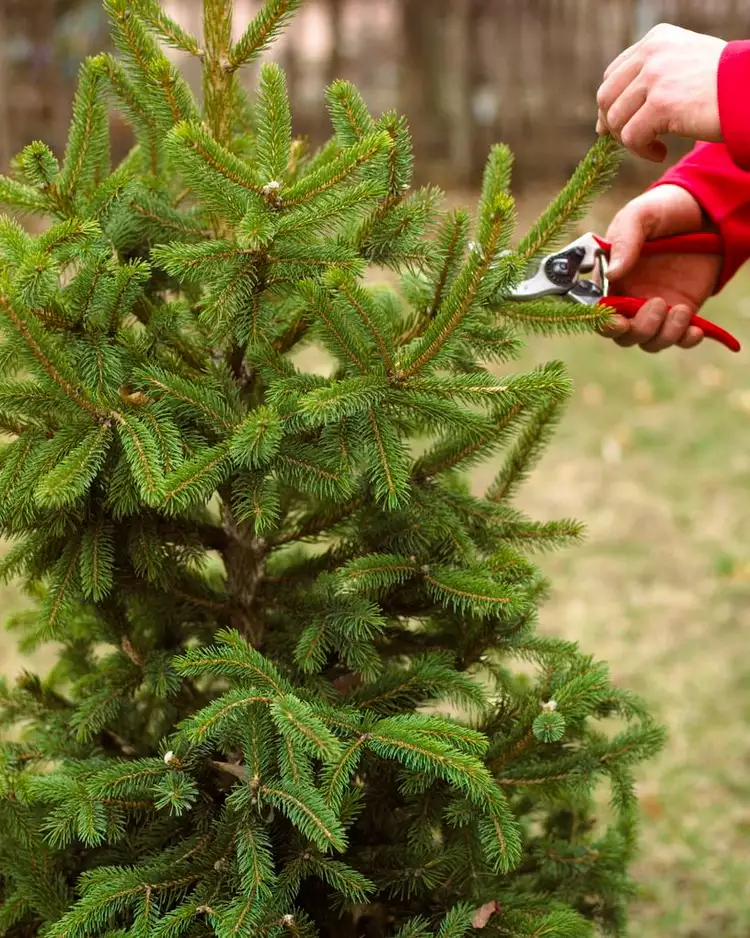How to Prune Evergreens to Look Beautiful Year-Round

Evergreens are some of the hardest-working living elements in your landscape. They produce foliage year-round, and in the depth of winter, they bring color and texture to front entries and garden beds, when most deciduous plants are bare. Caring for evergreen trees and shrubs includes occasional pruning to keep them healthy and looking their best. In some cases, you also might need to tame rapid growth that's crowding walkways or other plants. Pruning evergreens is a little different than trimming other trees and shrubs. This simple guide will walk you through the basics of pruning so you can enjoy decades of year-round color from these beautiful plants.
Tips for Trimming Evergreens
Besides trees or shrubs with dead or damaged areas, overgrown and fast-growing evergreens are the prime candidates for pruning. Your main goal is to preserve the natural shape of the plant as much as possible (unless you're creating a sculpted hedge or topiary, of course). So trade your hedge trimmers for a sturdy pair of pruning shears or loppers so you can carefully cut away individual branches. Selectively remove each branch back to the main branch it may be growing from, or to the trunk itself. For shrubs, you may need to cut a branch back to ground level. Annual pruning to maintain an evergreen's size is easier on the plant—and you—than tackling big pruning projects every few years.
How to Trim Overgrown Evergreen Trees
Evergreen trees that are pushing the limits on their planting space are tricky to rein in while maintaining the natural shape of the plant. In many cases, evergreen trees do not produce new growth on old portions of a branch. For example, new growth on a white pine forms exclusively at the tips of the branches. Cutting a branch back by half its length will simply result in a dead branch stub. Often the only tactic for reducing the size of an evergreen tree is to cut the lower branches all the way back to the trunk.
How to Cut Back Overgrown Evergreen Shrubs
Unlike overgrown evergreen trees, shrubs usually can handle more intense pruning to reduce their size. Still, it's best to trim back an overgrown shrub by pruning one branch at a time, rather than shearing the plant. This will make it much easier to maintain the shrub's natural shape. And remember, many evergreens do not produce new growth on old portions of a branch, so shearing certain evergreens can leave an ugly, brown mess that takes a long time to grow out.
Maintaining Evergreen Hedges
Yearly pruning is key to maintaining a hedge. Some fast-growing evergreens might demand an early spring pruning and a midsummer trim to keep them in bounds and tidy. Boxwood, juniper, yew, and holly are common evergreen hedge plants. A sharp pair of shears will do the job, but powered hedge trimmers make for faster work. Just be careful not to cut the hedges back to the dead zone (the inner area where there's no foliage). Some species will push out new buds when cut back to bare branches, but others won't fill in again. Stick to only sheering the outermost couple of inches of foliage.
The Best Time to Prune Evergreens
Late winter or early spring is the best time to prune most evergreens. Pruning in spring allows the cuts to heal quickly and new buds to develop. Flowering evergreens, such as rhododendrons and camellias, are an exception. To maximize flower buds for the following year, prune flowering evergreens right after they bloom. One surefire tip: don't prune evergreens in late summer or fall. Pruning late in the growing season leaves plants susceptible to winter damage.
The calendar isn't a factor when cutting out dead, broken, or diseased evergreen foliage. Remove the offending branches as soon as you notice them, cutting back to healthy, live growth or to the main stem. Aim to make cuts that leave the plant with the most natural shape possible. This often means cutting the branch back to the trunk or to ground level for a shrub.